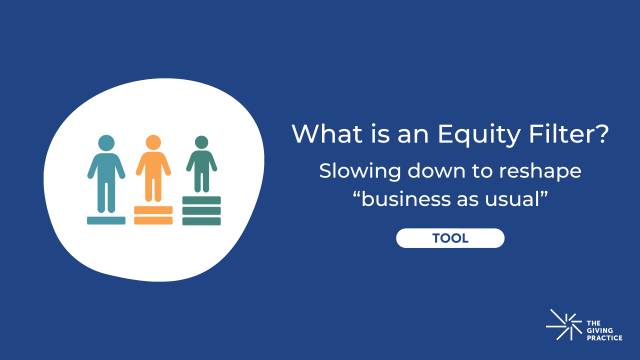
We philanthropy practitioners are, by nature, an impatient group of optimists, and sometimes our impatience can get the better of us. This happens when we’re in such a hurry to see impact that we fail to recognize unhealthy boundaries related to our role in the change process, don’t clearly identify and plan for the challenges and obstacles in the path ahead, skip important steps in the process of systems change, or disregard the readiness of our partners to assume responsibility for the tasks we ask them to undertake.
Developing healthy relationships in our sector can be particularly challenging; grantees and partners tend to think of us (or at least treat us to our faces) as smarter and savvier than we actually are, and when we buy into this mythology ourselves it becomes that much harder to cultivate candid communication and encourage the porous boundaries that should be the hallmark of true grant maker/grantee partnerships.
I learned these lessons the hard way in my own team’s strategic investments to reduce family homelessness here in the Pacific Northwest. After taking a year in 2007 to study the most effective interventions and learn from the leading national experts and programs addressing family homelessness, my team assembled all of the tools philanthropists so love – a grand Theory of Change, a Theory of Action, an Impact and Investment Model, and (the so poorly named), “Execution Plan.” I believed that our team had come up with some truly innovative concepts, and felt emboldened to dive in and drive forward a portfolio of investments with the potential to impact the immediate crisis of homelessness faced by so many vulnerable families in our community.
As we released our grand plan, everyone smiled and nodded, but few of our potential grantees offered any significant challenges to the path forward we had proposed. What I failed to recognize was that our thinking had gotten too far out in front of our key partners in the work, and that my team was the only set of players fully bought into the model. On top of that, the capacities and infrastructure required to take our ambitious vision to scale were not yet in place to “execute against the work.” There was considerable enthusiasm about the resources we were about to put in play, but the trust and healthy relationships that can lead to candid dialogue about the work moving forward – as well as the partner’s strengths required to undertake this work – had not yet been built. The boundary between grant-maker and grantee was too rigid to allow the dialogue we so badly needed to move forward together.
With the pressure on to make grants and advance towards the 3-5 year “interim measures of success” that were so beautifully (or so I thought) articulated in our plans, we started making substantial investments before our partners had a chance to go through their own, equally essential processes of understanding and owning what we were asking them to do, providing candid feedback, and building the organizational muscles necessary to successfully take on the work.
What resulted was several years of confusion: What, exactly, were we trying to accomplish? Who was in charge – the foundation, our intermediary, or our grantee partners in the field? How could we create baseline measures for our work without functional measurement and data systems? Where should our partners turn for needed technical assistance, capacity building, and grants management support?
That period of confusion not only slowed down progress towards implementation of our strategy, but also created an atmosphere of anxiety that was not conducive to the transparency and trust that should be the hallmark of effective grantor/grantee partnerships. Instead of moving together towards investments in a body of work marked by shared ownership of an integrated set of goals, we found ourselves pushing partners who didn’t yet buy into everything the foundation thought we had agreed to accomplish.
These were, in many ways, rookie errors. But they are also mistakes our sector makes, over and over again. The problem with impatience in the rush to results is that we skip important steps, don’t pause to identify mistakes, and don’t slow down to correct our mistakes in time to achieve the goals we want to achieve.
Fortunately in my case, the tenacity of my foundation’s commitment to the issues, as well as the passion of our partners for the work, allowed us to recover from my rookie errors and work with our partners to put the relationships back on track and heading in the right direction. But our initial sense of impatience cost us several years of precious time, and actually slowed down our ability to move towards the outcomes we hoped to achieve for the homeless families who are struggling to gain stability in their lives. With a little more patience, we could have traveled faster, together, towards our shared objectives.
To be continued….
For more information about Reflective Practices, please click here.



